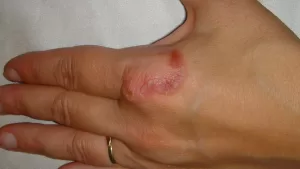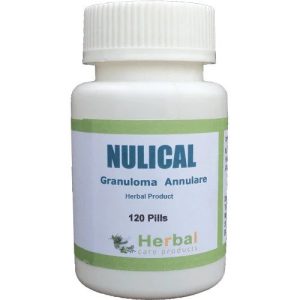No products in the cart.
Return To Shop 0 Cart $0.00 0
No products in the cart.
Return To Shop Shopping cart (0)
Subtotal: $0.00
Free shipping over 299$
Can you get granuloma annulare from a food allergy?
Granuloma annulare is a type of skin disorder that causes small bumps to form on the skin. It can occur anywhere on your body, but it’s most common in the arms and legs. These bumps may itch or burn when you touch them, which is why they’re sometimes called “eruptive” lesions. The cause of granuloma annulare isn’t entirely clear; some people say it’s caused by an allergic reaction to food, while others believe it has nothing to do with allergies at all—and instead could be caused by something else entirely!

The cause of granuloma annulare isn’t entirely clear.
Granuloma annulare isn’t caused by an allergic reaction to food, so it’s not contagious. It’s also not a cancer, fungus or parasite—though some people have wondered if the condition could be linked to Lyme disease.
In fact, granuloma annulare has been known since the 19th century: The term “granuloma” was coined in 1877 by Dr. Richard Brightwell as a type of nodule that appeared on skin after surgery (it was described as “granular”).
The cause of granuloma annulare is still unknown; some researchers believe that certain viruses may play a role in causing this skin condition but there are no conclusive findings yet on whether or not these viruses cause granulomas themselves (while others think they do).
Granuloma annulare does not seem to be caused by an allergic reaction to food.
Granuloma annulare is not caused by an allergic reaction to food. Food allergies are more common in children than adults and may cause rashes, hives or swelling around the mouth and lips. But granuloma annulare is not a food allergy: it’s an immune system reaction to an unknown substance that causes inflammation in the skin.
Granuloma annularis has been reported in people who have other skin conditions (such as eczema) or who have had surgery on their skin (such as a burn). The condition usually occurs on the hands and feet but it can also appear on faces, ears or other parts of the body where there are lots of nerve endings—like your scalp!
More info: Vitamin D Could Be the Key to Treating Granuloma Annulare
Granuloma annulare most often goes away on its own, without treatment.
Granuloma annulare is a benign skin condition that can be caused by certain foods, but it’s not contagious. It will go away on its own without treatment.
If you have granuloma annulare, there are some things you can do to treat the symptoms:
- Apply an over-the-counter hydrocortisone cream (like Cetaphil) twice a day until your symptoms improve. Be sure to let your doctor know if this doesn’t help within a few weeks of starting treatment.
- If pain or itching occur, try over-the-counter benadryl and/or calamine lotion in addition to topical corticosteroids (such as hydrocortisone). This is also helpful if there are no clear signs of infection present—it will help reduce inflammation caused by the mites causing granuloma annulare
Most cases of granuloma annulare do not need to be treated and will go away on their own.
Most cases of granuloma annulare do not need to be treated and will go away on their own. If you have it, you should not scratch or pick at the rash. It’s best to avoid applying any creams or ointments to your skin, as well as over-the-counter medications like corticosteroids. Also avoid using prescription medications that may cause irritation like antihistamines or antibiotics (unless prescribed by a doctor).
If you’re itching or burning after eating certain foods that make contact with your body (such as nuts) then it could be a sign that something in those foods is causing an allergy reaction—and this might mean you need allergy testing before deciding whether treatment is necessary!
More info: Does Drinking Alcohol make Granuloma Annulare worse?
Conclusion
So, can you get granuloma annulare from a food allergy? It’s possible, but it’s also unlikely. If you have granuloma annulare and are concerned about the cause of your reaction or its severity, talk to your doctor. They can help diagnose what might be causing the condition, and they may recommend additional tests if needed.
More
More

